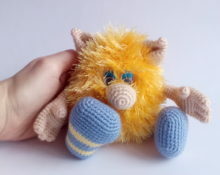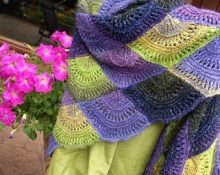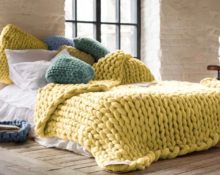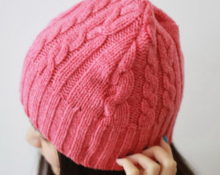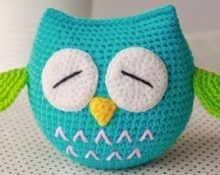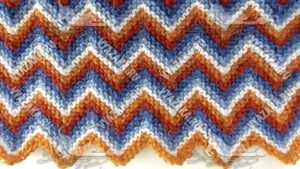
If you are a beginner craftsman, then you can try your hand at it on a small children's blanket measuring 80X80 cm. It turns out textured and voluminous. Your baby will love such a cute blanket or can be a wonderful gift for a newborn. It knits quite easily, almost automatically.
Necessary materials
For a children's blanket, it is advisable to take yarn consisting of half cotton and acrylic.
Turkish-made Gazzal Baby Cotton XL yarn is perfect. Other yarn, for example, Alize Lana Gold Classic, Yarnart Jeans, is also suitable, but the finished product from it is much stiffer, which is unacceptable for a children's blanket.
If the blanket is knitted for the winter, then a thicker thread, for example, Gazzal Baby Wool XL, will do. You can knit a blanket either by knitting or crocheting.
Yarn quantity
For a children's blanket measuring 80x80 cm. You will need 13 skeins of yarn, 50 g each. each, a total of 200 gr. yarn.
The zigzag or chevron pattern allows for various combinations of colors; the choice is limited solely by the imagination of the craftswoman.The width of the stripes and the number of colors may also vary.
Description of mating
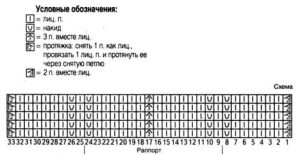
The width of one repeat is 10 cm, for a blanket it is 80 cm. 8 reports are needed. Rapport consists of 27 loops. For 8 patterns you will need 216 stitches and 5 stitches for the edges.
- We cast on 221 air loops.
- Forming the edge. Leave one instep loop, 2 single crochets, skip 1 stitch and knit 12 single crochets. We form the top of the chevron - we make three loops into one. Next are 12 more single crochets. We skip two loops and knit the second repeat in the same way as the first, that is, 12 single crochets, then we form the top of the pattern, then 12 single crochets. In this way we knit all eight repeats. Next, we form an edge from the remaining three loops, skip one of them, knit the other two with a single crochet.
- You can only change colors in odd-numbered rows.
- We do not finish one edge loop, form a second edge loop and do not completely knit the stitch, take yarn of a different color and finish the last stitch with this color. We pull it up, form an air loop, unfold it and start knitting a new row in a new color.
- We form subsequent rows similarly to the second.
A knitted large blanket will be an excellent element of decor; in addition, covering yourself with it is always doubly pleasant, since a piece of the soul of the craftswoman is embedded in it.
In principle, knitting a large-sized blanket, after working out the technology on a child’s one, is not difficult, but still requires effort.
Material selection
If thin yarn is used for knitting, then the finished product is light and elegant; if the thread is thick, then the blanket will be textured.
In addition, the quality of the yarn is also important.The finished product made from low quality yarn will not last long, so you should not skimp on purchasing good threads.
As an option, you can knit a blanket from the remnants of threads of different colors, although here you should focus on the thickness of the threads, because if it is different, then the blanket will turn out to be heterogeneous.
The color and its quantity can be different; these can be contrasting colors or similar in tone.
Product calculation
For a large homemade blanket, the yarn consumption will be much higher.
Calculation of the exact amount of yarn will depend on the size of the intended product, as well as on the yarn that is selected for knitting.
In order not to make a mistake with the amount of raw materials required, you can choose yarn to knit one element, counting the number of such elements and the amount of raw materials spent on it. Additionally, an individual element has a width and a height.
We divide the total width of the blanket by the width of one element and get their total number. Then we divide the total length of the blanket by the length of one element and get the number of elements in length.


 0
0